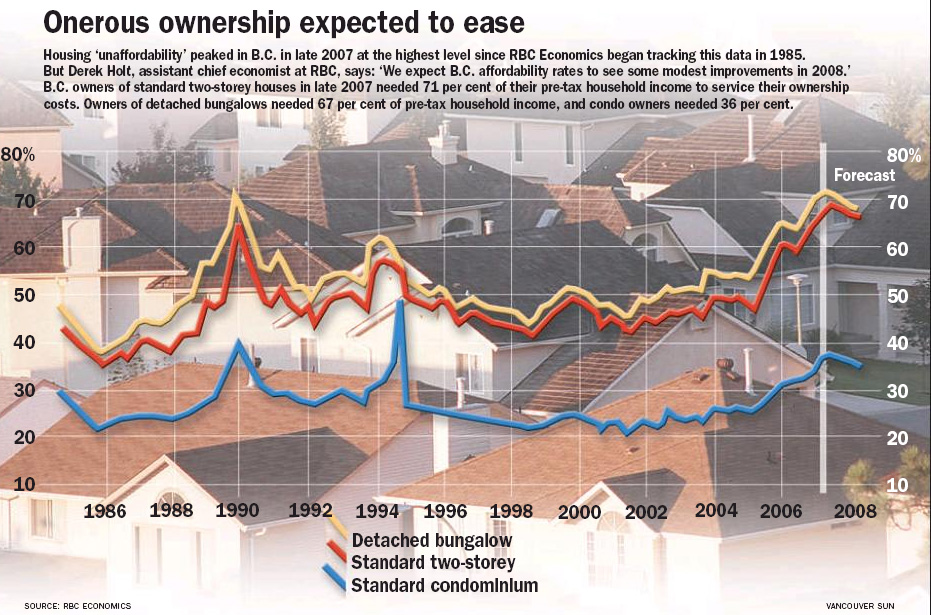Sue Kirchhoff
USA Today

The stimulus plan tries to make it easier to secure or refinance mortgages for more expensive homes.
WASHINGTON — Many families could see tax rebate checks of $1,200 or more by late spring or early summer. Businesses would get financial incentives for new investment. Strapped borrowers and lenders could find it easier to get mortgages or refinance.
The roughly $150 billion stimulus package announced by the White House and the bipartisan House leadership Thursday contains a tight list of targeted incentives that won’t go anywhere near solving underlying economic problems — notably a deepening housing recession — but could blunt the pain of a possible downturn.
While negotiators set aside partisan rancor to quickly work out a package, the proposal could be delayed or modified in the Senate. Still, the main provisions unveiled Thursday will likely form the basic framework of any final bill.
“You’ve got to be encouraged by the response of policymakers,” says Mark Zandi, chief economist of Moody’s Economy.com, while adding that Congress eventually must take stronger action on housing.
There are downsides. Some economists are skeptical stimulus bills work; others say business tax cuts haven’t been particularly effective in the past. Treasury Secretary Henry Paulson said he was “run down” by lawmakers who insisted that mortgage giants Fannie Mae and Freddie Mac be allowed to buy pricier home loans even though Congress hasn’t tightened regulation of the entities, as promised.
There’s also an outside chance the measure, equal to about 1% of annual economic output, could kick in when conditions are already mending.
“If it’s too large and it comes in too late, and you have all these (Federal Reserve interest rate reductions) in the pipeline and it can be counterproductive,” says Michael Wallace of Action Economics. “In the greater scheme of things, it reasonably addresses some specific issues.”
The plan’s highlights:
Rebates.
Consumers with 2007 earned income of at least $3,000 would get a rebate of $300 minimum, even if they have no income tax liability. Those with children would receive another $300 per child. In general, checks rise with tax liability up to $600 for individuals and $1,200 for couples, plus child rebates. The program starts phasing out for single filers with adjusted gross income of more than $75,000 and $150,000 for married couples filing jointly. About 117 million families will benefit.
Studies have shown that 2001 tax rebates turned out to be effective in stimulating consumer spending. It took about 10 weeks to get those checks in the mail. People may not see these proposed rebate checks until early summer, because the IRS must first process 2007 tax returns. Paulson said he was hopeful that Treasury could start to get checks out as soon as May.
Even with the delay, tax rebates “have a psychological impact,” says Tom Ochsenschlager, vice president-taxation for the American Institute of Certified Public Accountants. “Even if people aren’t going to get it (rebate check) until June or July, they think the government is going to do something, which is reflected in the stock market.”
Business.
The package includes more than $40 billion in business tax breaks, including allowing businesses to more quickly deduct the cost of new equipment. The package provides a 50% bonus deduction on new equipment during the year it is put into service, with some exceptions. It also allows faster expensing of property in some cases.
Republicans say previous similar measures brought about a 4% increase in business spending in the first six months they were in effect. The non-partisan Congressional Budget Office in a recent analysis said the impact of such tax breaks was “relatively modest.”
Kent Bentsen, president of the Equipment Leasing and Finance Association, which not surprisingly liked the plan, noted that investment in plant, equipment and software made up 15% to 17% of economic output.
Housing.
The plan tries to make it easier to secure or refinance mortgages for more expensive homes. First it would allow Fannie Mae and Freddie Mac, for a year, to buy loans of up to $729,750. The current limit is $417,000. The package would similarly increase the $362,790 limit on loans insured by the Federal Housing Administration, while making it easier for borrowers to qualify.
The market for bonds containing so-called jumbo loans, those above Fannie and Freddie’s current $417,000 limit, has essentially dried up in recent months due to turbulence in the mortgage market. Lenders making such loans are requiring even borrowers with good credit to come up with larger down payments and are charging higher interest rates. That’s a particular problem in states like California where the median existing home price is about $490,000.
Richard Moody, chief economist at Mission Residential, says he’s skeptical as to how much good raising the Fannie and Freddie limits will do, given lenders’ recent, tougher standards.
“When you’re talking about a $700,000 house, a 20% down payment is still a good chunk of change,” Moody says.
Further, the plan shifts more risk to taxpayers, because FHA loans are insured by the federal government.
How proposed rebates could affect certain taxpayers, according to a statement from House Republican leader John Boehner:
A parent with two children: A man worked part of the year, earning $9,000. He has custody of two children. He owed no federal income taxes for 2007. He would be eligible for a base rebate of $300 for himself because his earned income was at least $3,000. He would also qualify for a $300 children’s bonus for each of his two kids.
Rebate: $900
A couple with two children: Both worked part-time in 2007 and have two children. After taking available deductions and credits, their federal income tax liability was $500 for 2007. Because their earned income was more than $3,000, they would qualify for the $600 base rebate for a couple. They would also have enough earned income to qualify for a children’s bonus of $300 for each of the two children.
Rebate: $1,200
A couple with five children: After taking available credits and deductions, their 2007 taxable income was $95,000, leaving them with a federal income tax liability of just over $16,600. Under the proposal, they would get the full base amount of $1,200. They would also qualify for a children’s bonus of $1,500.
Rebate: $2,700
Retired couple: As a result of their investment income, a retired couple paid $4,000 in federal income taxes in 2007. They had no dependent children, so there is no children’s bonus.
Rebate: $1,200
A couple with one child: They were able to retire young but still collect dividends and capital gains from a business they sold a few years ago. The couple paid $19,000 in federal income taxes on that income in 2007. They would qualify for the base amount of $1,200. They would also qualify for a children’s bonus of $300, because they paid at least $1 of federal income tax in 2007 even though they had no earned income.
Rebate: $1,500
High-income couple with children: Both spouses are lawyers with a combined income in 2007 of $300,000. They have four children. Because their AGI is over $150,000, they are disqualified from receiving either the base amount or the children’s bonus.
Rebate: $0










